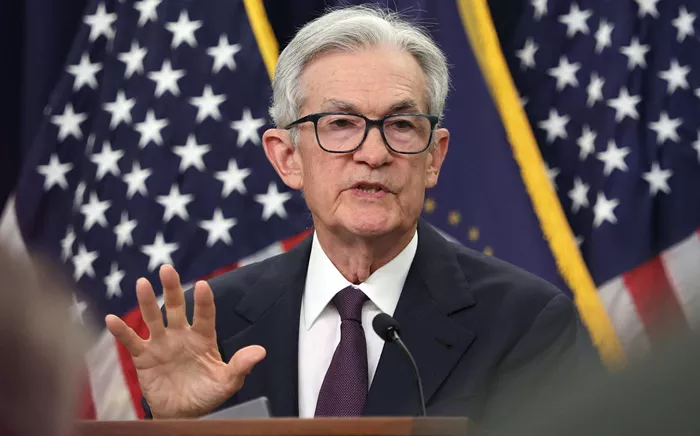U.S. stock markets reversed earlier gains on Wednesday after Federal Reserve Chair Jerome Powell warned that inflation and trade tariffs may delay interest rate cuts. His remarks caused a slight pullback across major indexes.
The S&P 500 ended the day down 0.03%, the Dow Jones Industrial Average dropped 0.10%, and the Nasdaq 100 closed flat. Futures for the S&P 500 remained steady, while Nasdaq futures slipped by 0.02%.
Powell’s Warning Triggers Market Caution
Stocks had opened higher on hopes that tensions between Israel and Iran were easing. However, sentiment shifted after Powell said inflation could remain high due to new tariffs, making it harder for the Fed to lower rates.
Following its policy meeting, the Federal Open Market Committee (FOMC) left interest rates unchanged. However, it cut its U.S. growth forecast for 2025 and raised its inflation outlook. The Fed still expects two interest rate cuts this year, but Powell emphasized that economic uncertainty remains.
“We expect a meaningful amount of inflation in the coming months,” Powell said, referring to rising tariffs.
Geopolitical Tensions Cloud Outlook
Investors remain concerned about the escalating conflict in the Middle East. Tensions between Israel and Iran are entering their sixth day with no signs of resolution. President Trump said Iran may be open to negotiations, but Tehran denied the claim. He also warned that Iran must surrender unconditionally, fueling fears of a U.S. military involvement.
Although the Strait of Hormuz remains open — a vital route for 20% of global oil — severe GPS jamming near Bandar Abbas caused a tanker collision this week, raising concerns about shipping safety.
Economic Data Offers Mixed Signals
Mortgage applications dropped by 2.6% for the week ending June 13. Purchase and refinance applications fell 3.0% and 2.1%, respectively.
- The average 30-year mortgage rate dipped to 6.84%, down from 6.93%.
- Initial jobless claims dropped by 5,000 to 245,000, matching forecasts.
- May housing starts fell 9.8% month-over-month to 1.256 million, a 5-year low.
- Building permits declined 2.0% to 1.393 million, weaker than expected.
These weak housing numbers added pressure to markets, even though lower construction could influence Fed policy toward easing.
Fed’s Economic Outlook and Market Expectations
The Fed’s updated projections show:
- 2025 GDP growth lowered to 1.4% (from 1.7%).
- 2025 core inflation raised to 3.1% (from 2.8%).
The Fed’s “dot plot” suggests two quarter-point rate cuts are still expected this year, similar to March forecasts. But the outlook is clouded by trade tensions.
President Trump plans to send tariff letters to multiple U.S. trade partners within the next two weeks. These moves come as part of a 90-day tariff pause that expires on July 9. Markets now assign only a 10% chance of a rate cut at the Fed’s next meeting on July 29–30.
Global Markets and Bond Yields
European stock markets ended mixed:
- Euro Stoxx 50 dropped 0.41% to a 3.5-week low.
- Shanghai Composite edged up 0.04%.
- Nikkei 225 in Japan rose 0.90% to a 3.75-month high.
Treasury yields rose slightly as the Fed signaled inflation pressure may stay elevated:
- The 10-year U.S. Treasury yield increased by 0.8 basis points to 4.396%.
- September T-note futures ended slightly lower.
Earlier gains in Treasuries faded after Powell’s remarks. However, bond prices found some support from weak housing data and geopolitical concerns.
European bond yields dropped:
- The 10-year German bund yield fell by 3.8 bps to 2.497%.
- The 10-year UK gilt yield declined 5.5 bps to 4.495%.
European Central Bank (ECB) officials also warned of risks to the Eurozone from U.S. tariffs and Middle East tensions.
In the UK, inflation eased slightly:
- May CPI came in at 3.4%, down from 3.5% in April.
- Core CPI was 3.5%, matching expectations.
Markets are now pricing in only a 7% chance that the ECB will cut rates at its next meeting on July 24.
Read more:


